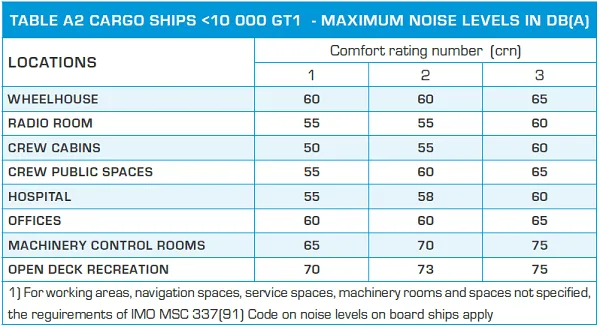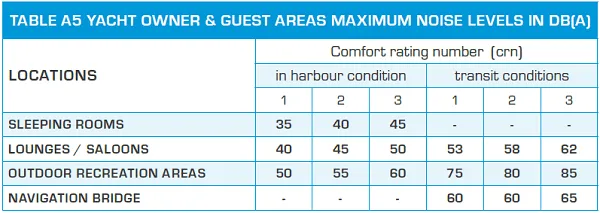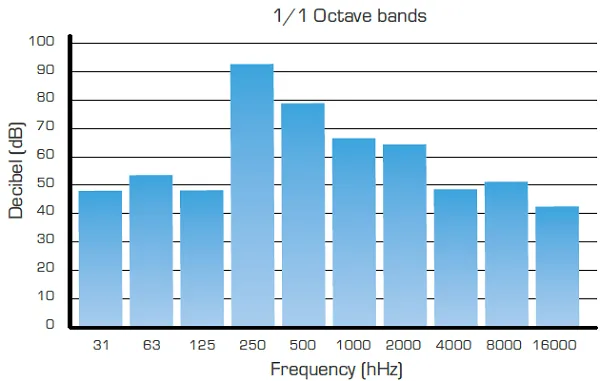
Noise Control: Part 2 – What is acoustic comfort?
Noise Control: Part 2 – What is acoustic comfort?
– by Peter Koelewijn, 02-03-2018
What defines the comfort level of an air conditioning system? Chances are high the first thing that comes to mind is temperature, which is understandable. Air temperature is one of the main properties of climate as air conditioning is all a matter of thermodynamics, but there is another property which definitely contributes to the level of comfort. That is sound.
When sound is judged to be unpleasant, loud or disruptive to hearing, it is called noise. Super yachts, cruise ships, and even commercial vessels, all are subject to certain noise level requirements. In these series of blogs we are going to dig deeper into the topic of noise and noise control.
- Blog 1: What is sound?
- Blog 2: What is acoustic comfort?
- Blog 3: Three types of noise.
- Blog 4: How to prevent or reduce noise issues.
It’s all a matter of comfort
The dictionary definition of ‘comfort’ is a pleasurable state of wellbeing, a condition in which one effortlessly feels good.
can also – and this is probably best applicable to HVAC – be described as the absence of discomfort. When a system is not intrusively audible, everyone is happy. The issues start when the presence of a system becomes noticeable. It’s also important to remember that comfort is not the same as luxury.
If we define acoustic comfort as a situation where one doesn’t notice the running HVAC system, the comfort level will depend on the situation in which we find ourselves. Every situation has its own noise criteria, and what is comfortable at certain times will not automatically be experienced as such at others. Of course, this isn’t completely subjective either: some smart people have thought about this and given us guidelines for noise requirements. An example is the Det Norske Veritas (DNV) comfort class document from which the tables below are taken. Let’s have a look:

Table 1: Noise requirements Cargo ship

Table 2: Noise requirements Yacht
The first row indicates the comfort rating, where 1 is highest and 3 is lowest. Now notice the differences in cabins/sleeping rooms. Level 1 corresponds to 50 decibels on a cargo ship and 25 on a luxury yacht. That’s a major difference, as we will see when discussing decibels below.
These tables seem to imply that the quieter a system the better, because comfort rating 1 has lower decibel levels than ratings 2 and 3. But this is not entirely true: the quietest installation is not always the most comfortable as one sound can mask another, more irritating, one. An example of this is the public spaces on a vessel or an office environment. The ambient sound of an HVAC system can conceal background noises present in public areas, offices or even the noise of engines running. But how can a sound being louder be better for the comfort level? The answer is found in the way we experience sound.
Comfort me with soft decibels and gentle frequencies
Some noises are more irritating than others. For example, the soft beep of your alarm clock is more annoying than the sound of music coming from a hi-fi system, even if the latter is louder. The degree of discomfort caused by a sound depends on two properties: volume and frequency. To discuss these we are going to dig a little deeper into the matter.
Decibel
A decibel is the degree of pressure increase – or the amplitude – corresponding with the loudness of a sound.. The higher the pressure, the louder the volume. Converting to the human ear, it is indicated as the decibel unit.
Frequency
The other property of sound is frequency, which is the number of periods per second. A high frequency results in a high-pitched sound and a low frequency in a low-pitched one. Every sound you hear is characterised by a combination of intensity, or loudness, and frequency, or pitch. This combination defines how disturbing a noise is. For
example see the diagram below, a sound with a volume of 30 dB and a frequency of 1000 Hz is more unpleasant than a sound with 40 dB and 125 Hz.

Image 1: Spectrum of human hearing
In reality, no sound consists of a single frequency. Every air handling unit, fan or electric motor produces noise containing multiple frequencies, each with their own intensity. A clear overview of this is provided by a tool called the octave band. The diagram below shows sound intensity against frequency. Each column covers a band of frequencies, ranging from 31 to 16,000 Hz.

Image 2: Octave band
There are powerful instruments which can measure the sound level at every frequency. We will take a look at these in the next chapter where we talk about three different sorts of noises which are commonly found in our sector.
Peter Koelewijn | Sales Manager
Peter Koelewijn has been working at Heinen & Hopman since 2001. Starting out as a mechanic, he gained valuable field experience mounting ducts and pipes for various shipbuilding projects. Five years later he switched to engineering, where he worked his way up from draughtsman, to engineer to site manager, leading teams of HVAC mechanics at one of the largest shipyards in Germany. The last couple of years he has been working as sales manager, combining knowledge from the field and the office to find the best solutions for our customers.